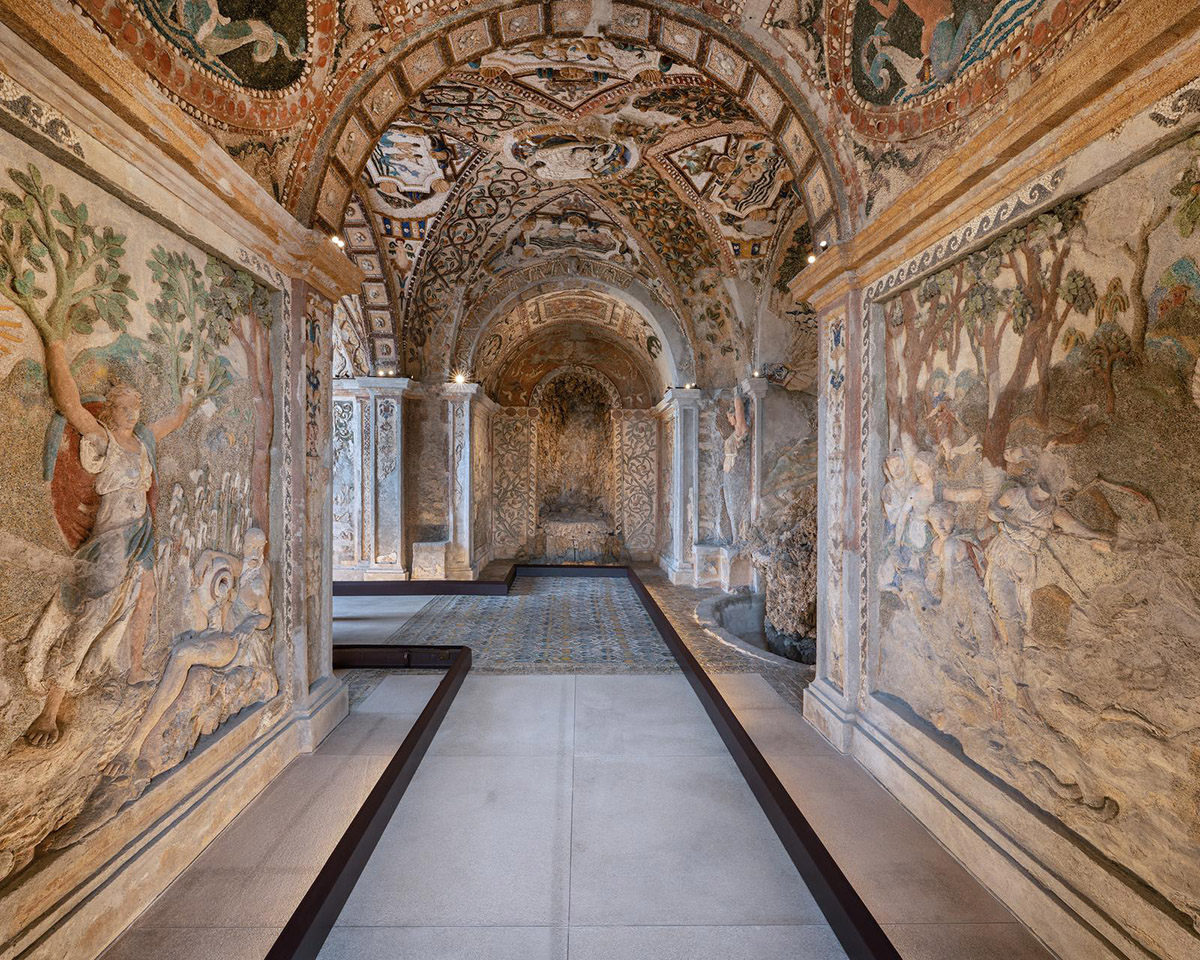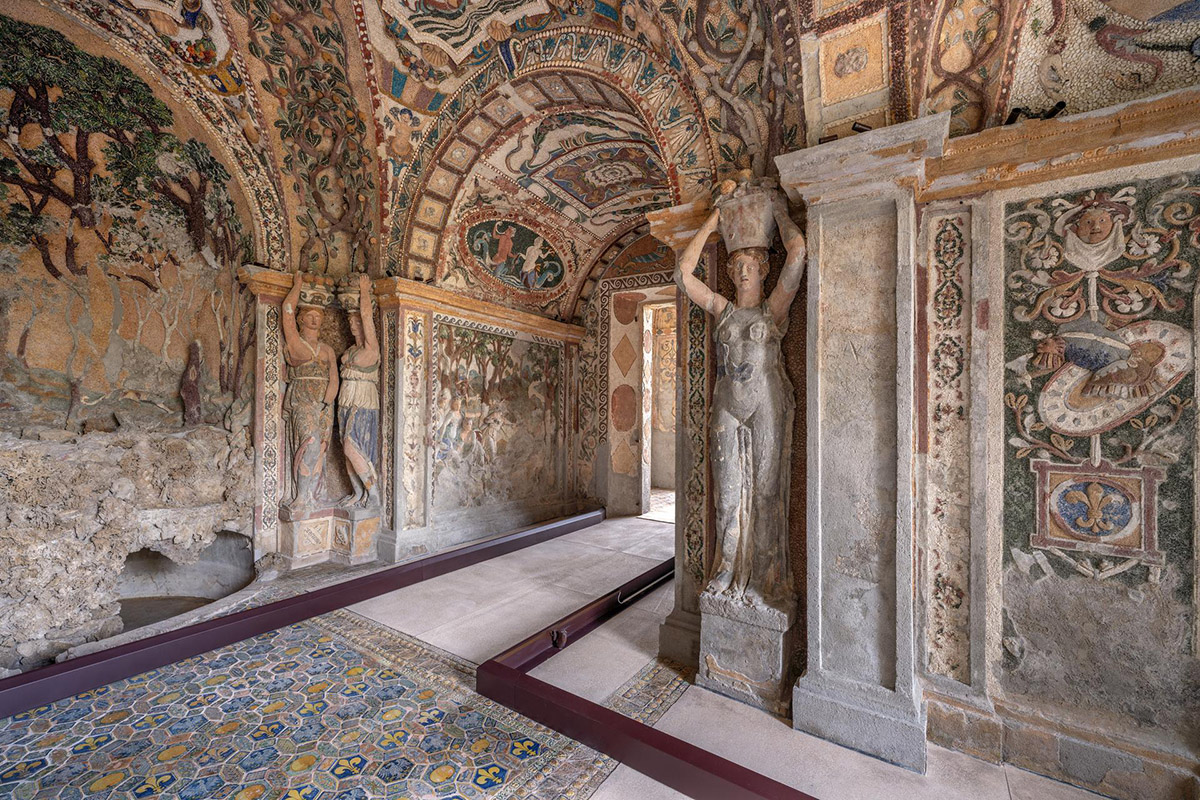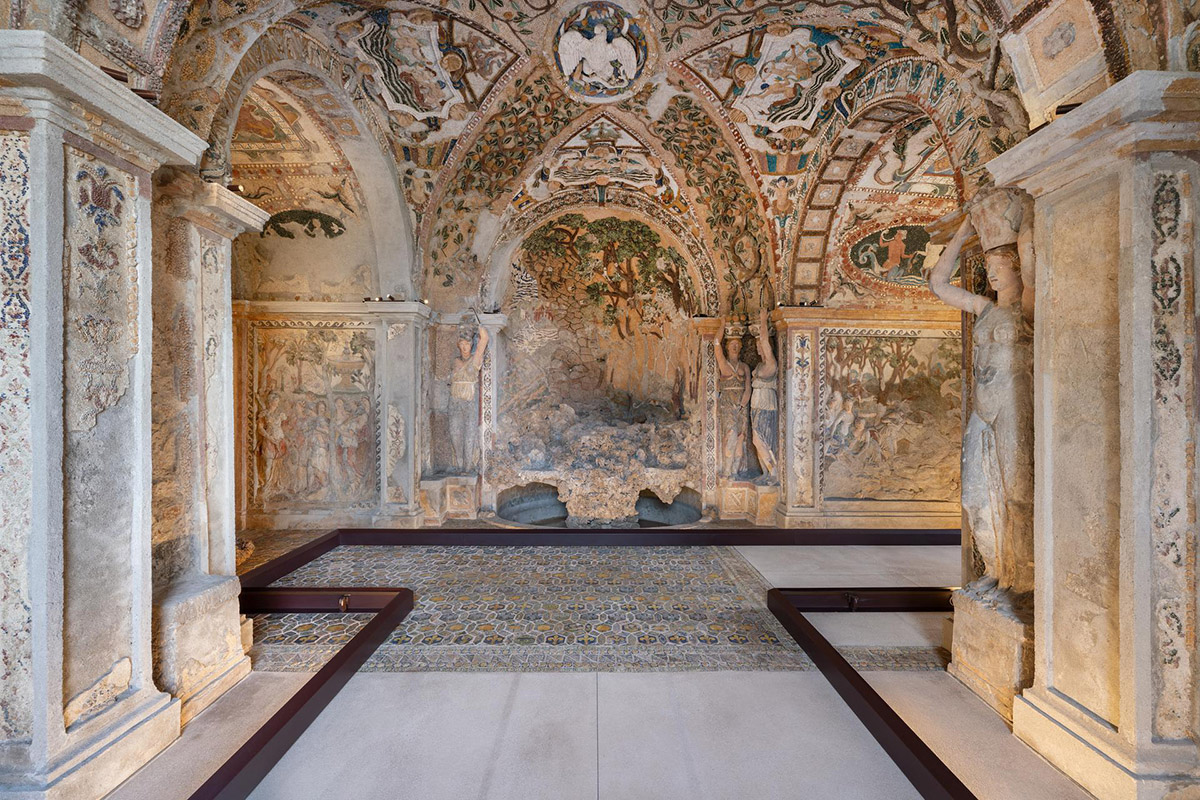FENDI’S PATRONAGE LEADS TO REOPENING OF GROTTO OF DIANA AFTER 50 YEARS

On May 6, 2025, the Grotto of Diana will reopen to the public at Villa d’Este, after nearly half a century of closure and two years of restoration work.
Thanks to the dedicated efforts of the Autonomous Institute of Villa Adriana and Villa d’Este – VILLÆ of Tivoli to enhance its heritage, along with Fendi’s generous patronage, the Grotto of Diana at Villa d’Este is once again accessible to the public.
Constructed between 1570 and 1572 by a large team of artisans and located near the Palace of Ippolito d’Este, the Grotto of Diana—closed, it is believed, since the 1980s—returns as a vibrant part of the Villa, following a careful process of research, restoration, and enhancement that began in 2023.
“This restoration aims to explore and decode the countless layers of meaning at Villa d’Este, highlighting how this place continues to radiate its magnificent beauty while occasionally revealing the sophisticated cultural vision that inspired it. With this effort, we aim to counteract the loss and neglect that often affects our heritage, and the recovery of the Grotto of Diana ensures that this treasure becomes accessible once more to the public. After all, the history of art is also a cognitive process nourished by these ‘re-emergences’, reshaping both the present and the past for future generations. At its core, an all-encompassing aesthetic experience reveals the value of an artwork—shifting from private enjoyment to public significance, from individual pleasure to a tangible act of generosity, aimed at this sharing of beauty, which has been made possible thanks to the heartfelt support of Fendi.” – Andrea Bruciati, Director of the Villa Adriana and Villa d’Este Institute.
“The restoration of the Grotto of Diana at Villa d’Este is, for Fendi, an act of love—the latest in a centuries-long journey of protecting and enhancing Italy’s cultural heritage, culminating this year as we celebrate our centennial. Deeply rooted in Rome, where our Maison’s foundations and creative heart have been since 1925, this project represents another investment in the future that begins with memory of the past: a commitment to preserving the beauty and history of our country, passing this precious monument on to future generations.” – Silvia Venturini Fendi, Artistic Director of Accessories and Menswear at Fendi.
This project, passionately promoted by the Institute and made possible with the support of a Maison like Fendi, deeply connected to cultural institutions, revives a space that tells the story of a place where art and nature merge in perfect harmony.
THE GROTTO OF DIANA
The Grotto of Diana is located in the upper part of the garden at Villa d’Este, beneath the Loggia of the Winds, with its main entrance positioned along the Cardinal’s Walk. The cross-shaped space consists of a central area with a cross vault and large caryatids with baskets, a large niche with a rocky backdrop and fountain, and three arms: The first, functioning as an antechamber, has two wall niches and a barrel vault; the second, on the left, displays two bas-reliefs and, at the end, a niche with a rocky backdrop and fountain; the third, on the right with a barrel vault, features two large bas-reliefs on the sides and at the end an opening leading to a loggia that looks out toward Rome.
From this loggia, a double horseshoe staircase leads above the Loggia of the Winds to a small terrace with a wide panoramic view: from Mount Soratte to the mountains surrounding Tivoli, all the way to the Castelli Romani; with The Eternal City as the focal point and center of this rare landscape.
THE DECORATIVE CYCLE
The decorative program of the Grotto features a rich and elaborate scheme, composed of an enormous rustic, multicolored, and multi-material mosaic, made with shells, glass paste, semi-precious stones, stone fragments, and mineral crusts, covering the entire surface. A vast blend of materials enhances the luminous effects, enabling tone variations that give depth and movement to the surfaces, such as in the wave scenes on the ceiling’s marine imagery.
The overall effect is enriched further by two different types of floorings: The first, in glazed terracotta, has hexagonal tiles alternating rows of eagles, apples, and Este lilies, along withsmaller tiles showing various images; the second, in the loggia, features square elements in beige and brown terracotta.
The richness of materials reflects the complexity of the decorative cycle: On the vaults, marine scenes featuring Tritons and Nereids—inspired by classical imagery and likely connected to Villa Adriana—while on the walls and ovals, the themes are mostly drawn from Ovid’s Metamorphoses.
The four caryatid canephorae still in situ—originally there were six, but two have been lost— bear baskets filled with golden fruit on their heads. At the center of the vault is a white eagle, symbol of the Este family.
Originally, the nymphaeum featured four ancient sculptures: Two Amazons in the entrance niches, Minerva in the smaller rustic fountain, Diana in the larger rustic fountain. There are a total of eleven figurative scenes: One is lost and remains in a preparatory state; another is currently being identified. The nine remaining scenes, perfectly legible, are all linked to Ovid’s poem, which played a central role not only as a poetic source but also as an iconographic guide.
RESTORATION WORK
Over time, various past interventions have left a significant mark on the nymphaeum, affecting not only its preservation but also our understanding of its original aesthetic. Preliminary diagnostic analyses, conducted through sampling and direct surface inspections, confirmed the fragile state of conservation: Materials were severely compromised; freestanding sculptures showed missing parts, with underlying mortar layers exposed and oxidized metal supports; decorative elements, delicate and vulnerable, were deteriorating rapidly due to environmental conditions; the mosaics and glass tiles exhibited signs of decay; the ceramic flooring, although worn from decades of foot traffic prior to closure, which likely occurred in the 1980s, remained in decent condition.
Starting in autumn 2023, the two-year conservation project aimed to recover all the unique features of the Grotto, not just preserving the internal decorations, but addressing every aspect of the nymphaeum, including the architectural structures that support the outer façades, which are continuously exposed to weather elements. Beyond conservation, the restoration focused on enhancement, ensuring visitors could fully enjoy the Grotto.
Furthermore, one of the most significant interventions was the installation of a glass panel in the loggia overlooking Rome, a solution designed to protect the Grotto from the wind, which over centuries has contributed to the erosion of its most fragile materials.
Lastly, the lighting system was conceived not just as a technical upgrade, but as a tool of rediscovery, highlighting the passage of time and restoring the Grotto’s essence as a space of wonder and contemplation, where past and present meet in a dialogue of forms, shadows, and reflections.




